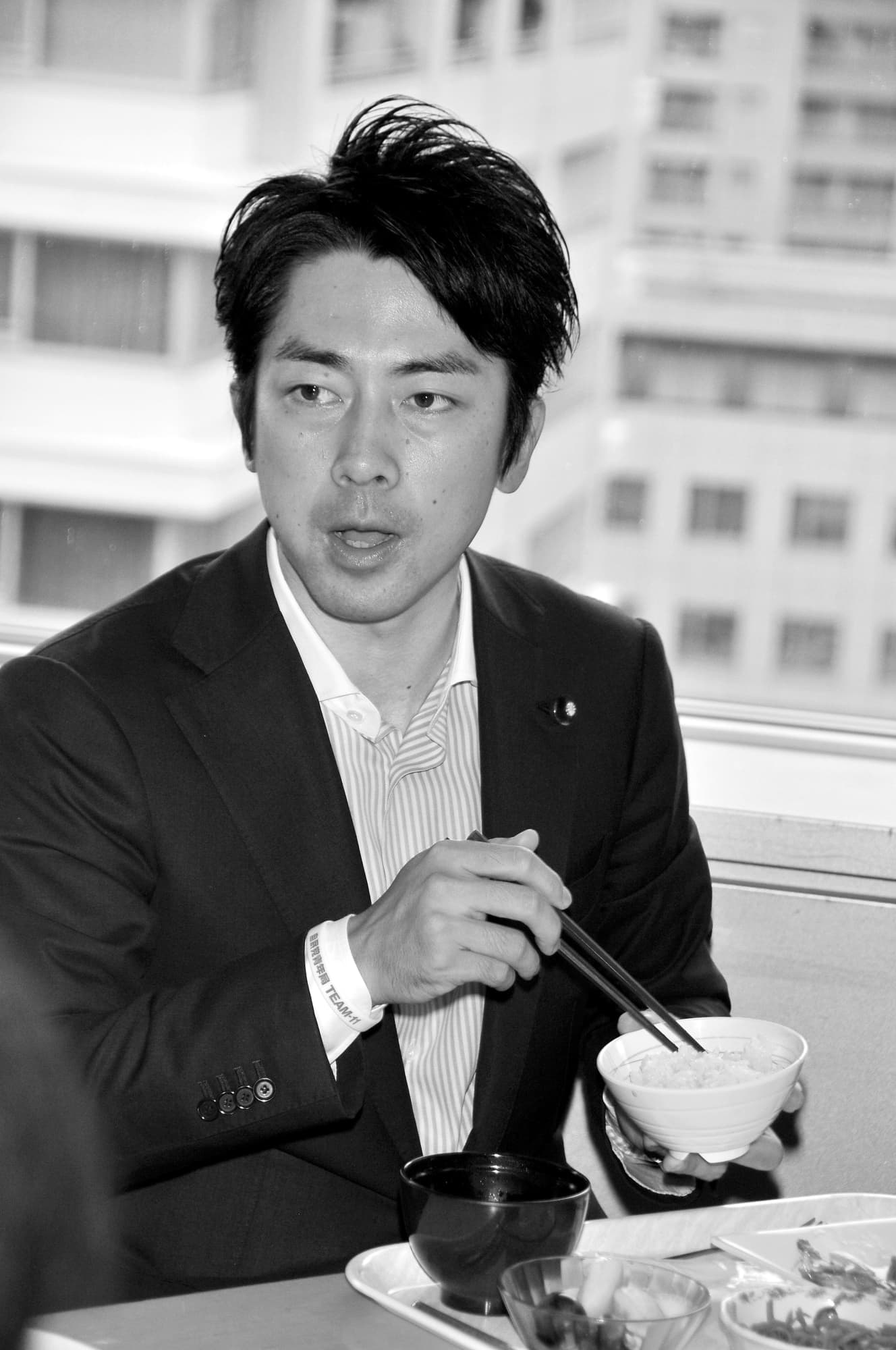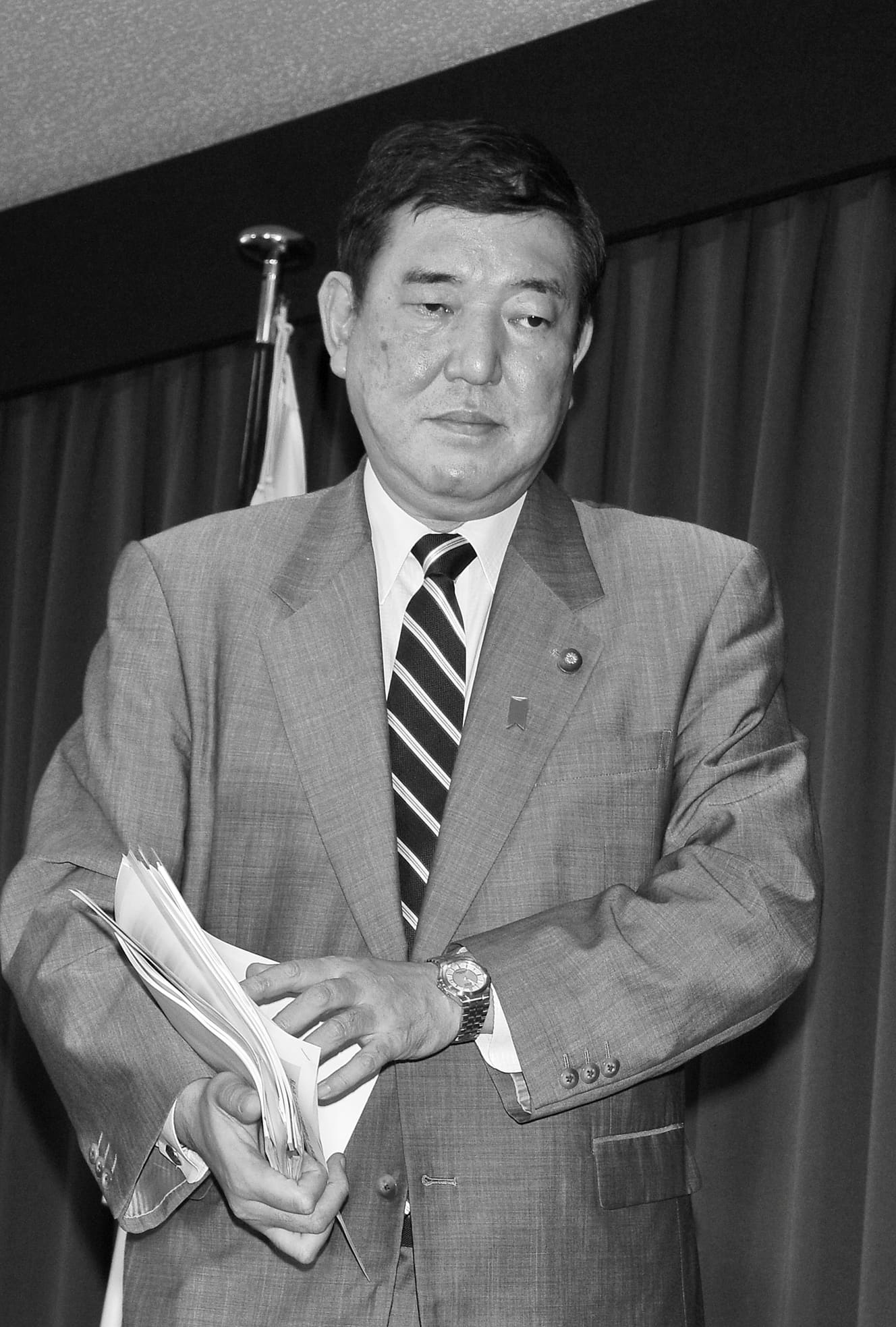Playback ’14: Stripped of his clothes, without manpower or money…When Prime Minister Ishiba was “alone” with Koizumi Shinjiro.
What did “FRIDAY” report 10, 20, or 30 years ago? In “Playback Friday,” we take a look back at the topics that were hot at the time. This time, we introduce the article “Shigeru Ishiba, Minister of Regional Development, stripped of his clothes by Prime Minister Abe and left alone with Koizumi Shinjiro,” which appeared in the October 10, 2002 issue 10 years ago.
Shigeru Ishiba won the LDP presidential election at the fifth attempt and became prime minister on October 1. He has had an unfavorable period of time as he has been at odds with former Prime Minister Shinzo Abe, who was “one strong” without bending on the correct theory that he stands for. This article reports on the state of Prime Minister Ishiba during those times. (The descriptions in parentheses below are quotes from past articles.)
The article states, “I felt like I was left all alone on a sand dune.”
“Mr. Ishiba (Shigeru) is from Tottori Prefecture. He is from Tottori Prefecture. He must be feeling as if he were left all alone on a sand dune. At one time he was touted as the next prime minister, but I fear that if things continue as they are, he will be buried in the sand.
In the second Abe cabinet, which was formed on September 3, ’14, Ishiba (then 57) was removed as secretary-general and appointed minister in charge of regional development. This post, which was newly created at that time, attracted much attention because Prime Minister Shinzo Abe (then 60) said that it was “an important post for designing Japan’s future. However, about three weeks after assuming the post, Ishiba’s complexion was said to be very pale. A reporter in the political section of a national newspaper who was close to Ishiba explained at the time: “[Ishiba] is committed to the reconstruction of the countryside.
“It sounded good to be working for the reconstruction of rural areas and building a Japan that could withstand population decline, but in reality, it was a decoration post with no budget, no dedicated room, and no personnel. But in reality, it was a decoration post with no budget, no dedicated room, and no staff. but in reality, it was a decoration post with no budget, no dedicated room, and no personnel. The Secretariat of the Regional Development Headquarters is staffed by 70 people from various ministries and agencies, but with only 70 people, there is only so much that can be done. There is just not much that can be done.
Some said that the lack of authority, personnel, and budget was nothing more than Prime Minister Abe’s attempt to “crush Ishiba” in anticipation of the LDP presidential election in 2003. In fact, the appointments resulted in the removal of Ichiro Kamoshita and Yasukazu Hamada, two of the few members of the Ishiba faction, as special assistant to the secretary-general and deputy secretary-general, respectively. Mr. Ishiba was stripped of all his responsibilities.
Shinjiro and his team of only four.
Furthermore, since the minister in charge of regional development is a specially appointed minister, there is no full-time deputy minister. He had no entourage to support him. Mr. Ishiba turned to Mr. Shinjiro Koizumi, then 33, who had been appointed Parliamentary Vice-Minister for Reconstruction and Cabinet Office and was his direct subordinate, and to Tatsuya Ito, former Minister of Finance, who had been appointed as his deputy.
To strengthen the unity of the four-member “Team for Regional Development,” which includes Masaaki Taira, Deputy Minister of the Cabinet Office, Ishiba has been meeting with them once a week. At that meeting, Shinjiro immediately made two proposals.
He said, “It is important for Mr. Ishiba to appear in the media in order to raise awareness of local development. Also, how about creating a “city manager system” to send young bureaucrats from central ministries and agencies to local governments?
With few allies, Shinjiro’s suggestion must have made him more than happy. Ishiba appeared on eight TV programs over two days on Saturday and Sunday in early September, and in one of his appearances, he said, “We should establish a city manager system and send young people to local governments,
In one of these appearances, he said, “I am going to set up a city manager system and send young bureaucrats to the regions.
Ishiba also said, “I am going to establish a city manager system and send young bureaucrats to the regions. This clearly shows how much Mr. Ishiba trusts Mr. Shinjiro.
Shinjiro voted for Ishiba in the 2012 presidential election, and while it would be nice if the two of them could work together to strengthen their unity, there was a possibility that Shinjiro would give up on Ishiba after seeing him unable to do anything. And if people thought that he was too dependent on Shinjiro, Ishiba’s centripetal force could be weakened. …… If this appointment was made with this in mind, it would seem that the Abe camp was very careful in its efforts to crush Ishiba.
His refusal to make personnel appointments was the decisive factor in the rift.
Ishiba and Abe had competed in the presidential election of 2012, but on the surface things seemed to be going well in the second Abe cabinet, with Ishiba serving as secretary-general. The decisive factor in their confrontation was their refusal to accept the appointment of Minister of State for Security Legislation, which was proposed in the cabinet reshuffle. This apparently aroused criticism of Ishiba within the party.
Ishiba remained in the cabinet as minister in charge of regional development, but when the second cabinet reshuffle took place in August 2004, he was asked to become minister of agriculture and fisheries, but he declined the offer. Since then, he has been out of step with the mainstream, especially the Abe faction, and has even been called the “opposition party within the party.
However, after a series of twists and turns, he became prime minister on October 1 of this year, as you know. He overcame Koizumi Shinjiro, who had been “left on his own,” and even defeated Koichi Sanae, who was considered a sure-fire winner, in a stunning upset. Since taking office, however, he has lost none of his one-woman showmanship and appears to be taking a more balanced stance, paying attention to reconciliation within the party. Will he be able to win the support of the public in the upcoming lower house election?

PHOTO: Takeshi Kinugawa
